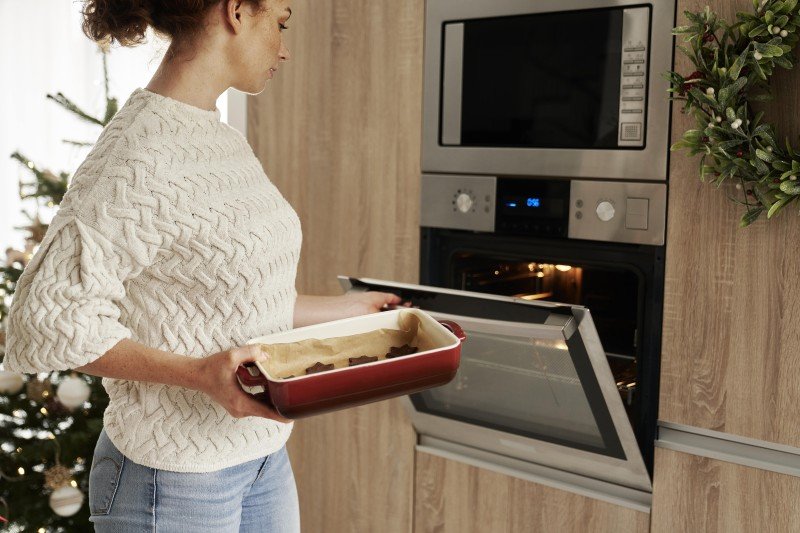Understanding Oven Hobs: The Heart of Culinary Crafting
In the world of contemporary cooking areas, the oven hob stands apart as an essential appliance. Not only is it a central part for cooking a variety of meals, however it likewise affects kitchen aesthetics, performance, and efficiency. This post delves into the types of oven hobs, their functions, benefits, and upkeep ideas. Furthermore, it addresses some often asked questions to provide a detailed understanding of this vital kitchen home appliance.
Types of Oven Hobs
Oven hobs can be classified into several types based upon their energy source and design. Understanding these variations can help consumers make informed decisions when picking the ideal hob for their kitchen needs.
1. Gas Hobs
Gas hobs utilize natural gas or lp as fuel, offering exact temperature level control and rapid heat. They are preferred by numerous chefs for their capability to provide visual feedback through flame.
Pros:
- Quick heat-up time.
- Accurate temperature adjustments.
- Suitable with all types of cookware.
Cons:
- Requires a constant gas supply.
- Safety concerns with open flames.
- Requires more upkeep.
2. Electric Hobs
Electric hobs are powered by electrical energy and feature smooth glass or ceramic surface areas. They typically can be found in 2 types: coil and strong.
Pros:
- Sleek appearance.
- No open flames, minimizing security threats.
- Easy to clean.
Cons:
- Slower to warm up and cool off.
- May need particular cookware (induction).
- Some might have irregular heat circulation.
3. Induction Hobs
Induction hobs use electro-magnetic energy to directly warm pots and pans. They just deal with ferromagnetic cookware.
Pros:
- Very energy-efficient.
- Quick cooling and heating times.
- Safe, as the surface stays reasonably cool.
Cons:
- Limited to specific types of cookware.
- Higher initial expense.
- Can produce sound when in use.
4. Strong Plate Hobs
These electric hobs feature strong metal plates that warm up and retain heat for cooking.
Pros:
- Durable and dependable.
- Simple operation.
Cons:
- Takes time to warm up.
- Less efficient than induction and gas models.
| Hob Type | Heat Source | Aesthetics | Maintenance |
|---|---|---|---|
| Gas Hobs | Gas | Traditional | Moderate |
| Electric Hobs | Electrical power | Modern/Sleek | Low |
| Induction Hobs | Electromagnetic | Contemporary | Low |
| Strong Plate Hobs | Electrical energy | Classic | Typical |
Features to Consider When Choosing an Oven Hob
When choosing the best oven hob for your kitchen, there are a number of vital features to take into account. These consist of:
- Size: Ensure the hob fits the designated space in your kitchen.
- Variety of Burners: Consider your cooking design and how many burners you'll require.
- Control Type: Look for easy to use controls, whether touch-sensitive or knobs.
- Safety Features: Many modern-day hobs include safety steps like flame failure gadgets or child locks.
- Energy Efficiency: Choose energy-efficient models to minimize energy bills and reduce your environmental impact.
Benefits of Using an Oven Hob
The oven hob provides several advantages that cater to both amateur cooks and professional chefs. Here are some key benefits:
- Versatility: Whether boiling, frying, simmering, or sautéing, an oven hob accommodates numerous cooking methods.
- Convenience: Many hobs featured additional features like timers and automatic shut-off systems for included convenience in hectic kitchens.
- Boosted Cooking Control: The instant heat responses of gas and induction hobs enable better control over cooking temperature levels.
- Design Enhancement: Modern hobs can boost the total aesthetic of a kitchen, adding a contemporary touch.
Upkeep Tips for an Oven Hob
To guarantee the longevity and performance of an oven hob, correct upkeep is essential. Here are some maintenance ideas:
Regular Cleaning:
- Use a soft fabric and moderate cleaning agent to clean surfaces after each use.
- For induction and ceramic hobs, avoid abrasive cleaners to avoid scratching.
Check for Wear and Tear:
- Inspect rubber seals and connections in gas hobs regularly for any damages or leaks.
- Make sure electrical connections are safe and secure in electric hobs.
Professional Servicing:
- Schedule routine upkeep checks with a qualified professional to avoid major problems.
The oven hob is an important part in any kitchen, acting as a centerpiece for culinary endeavors. Whether choosing Online Cooker Sales , electric, or induction, comprehending the numerous types, functions, and upkeep requirements is vital for making a knowledgeable decision. A well-chosen hob not only enhances cooking performance but also improves the overall kitchen experience.
Regularly Asked Questions (FAQs)
1. What type of hob is best for a beginner?
Electric hobs are often preferred by novices due to their ease of use and upkeep.
2. Can I use all pots and pans on an induction hob?
No, induction hobs require ferromagnetic cookware for them to work effectively.
3. How do I understand if my gas hob is working effectively?
Routinely inspect for even flame distribution and listen for any hissing sounds that may indicate leakages. If in doubt, seek advice from an expert.
4. Is a higher price constantly better for hobs?
Not always. While higher-priced designs might provide advanced functions, several mid-range products provide exceptional efficiency and durability.
5. Can I install a hob myself?
It is suggested to hire a professional, especially for gas hobs, due to safety concerns and regional policies.
By comprehending the subtleties of oven hobs, home cooks can make a knowledgeable choice that aligns with their cooking aspirations and kitchen styles. Picking the right hob improves both the cooking experience and kitchen aesthetic appeals, making it an essential investment for any home.

